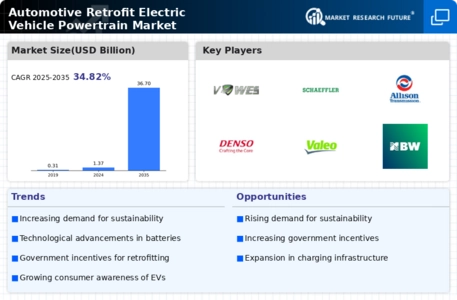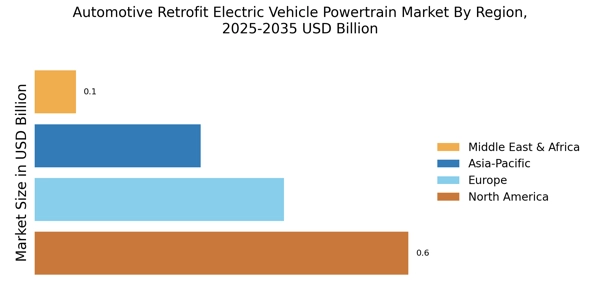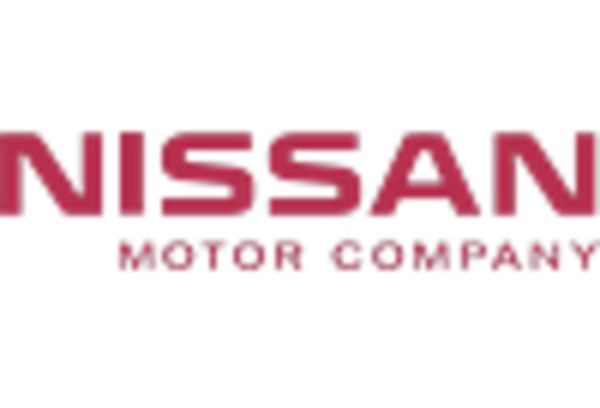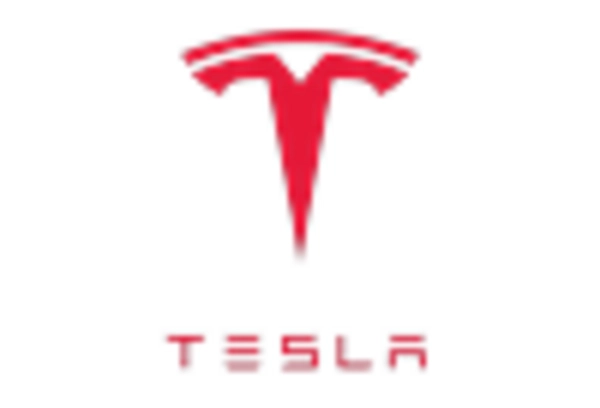Rising Fuel Prices
The Automotive Retrofit Electric Vehicle Powertrain Market is also being propelled by the increasing cost of fossil fuels. As fuel prices continue to rise, consumers are seeking more economical alternatives to traditional gasoline and diesel vehicles. Retrofitting existing vehicles with electric powertrains presents a cost-effective solution, allowing owners to save on fuel costs while contributing to environmental sustainability. The potential for long-term savings on fuel expenses is becoming a compelling argument for many vehicle owners. This economic incentive is likely to drive more consumers towards the retrofit market, as they recognize the financial benefits of transitioning to electric power.
Government Policies and Incentives
Government initiatives aimed at promoting electric vehicle adoption are a significant driver for the Automotive Retrofit Electric Vehicle Powertrain Market. Various countries have implemented policies that provide financial incentives for consumers who choose electric vehicles, including tax credits and rebates for retrofitting existing vehicles. Additionally, stringent emissions regulations are pushing manufacturers and consumers alike to consider electric alternatives. For instance, some regions have set ambitious targets for reducing greenhouse gas emissions, which necessitates a shift towards electric mobility. These supportive policies not only encourage consumers to retrofit their vehicles but also stimulate investment in the necessary infrastructure, further propelling the market.
Growing Availability of Retrofit Solutions
The Automotive Retrofit Electric Vehicle Powertrain Market is witnessing an increase in the availability of retrofit solutions, which is facilitating market growth. As more companies enter the retrofit space, a wider range of products and services are becoming accessible to consumers. This includes comprehensive retrofit kits that are designed for various vehicle types, making it easier for consumers to convert their vehicles to electric power. Additionally, the development of specialized workshops and service centers dedicated to retrofitting is enhancing consumer confidence in the process. As the market matures and more options become available, it is likely to attract a broader audience, further driving the growth of the Automotive Retrofit Electric Vehicle Powertrain Market.
Advancements in Electric Vehicle Technology
Technological innovations in electric vehicle components are significantly influencing the Automotive Retrofit Electric Vehicle Powertrain Market. Recent advancements in battery technology, such as solid-state batteries and improved energy density, have enhanced the performance and range of electric vehicles. These developments are crucial as they address previous limitations associated with electric vehicle adoption, such as range anxiety. Furthermore, the integration of smart technologies, including regenerative braking and advanced energy management systems, is making retrofitting more appealing to consumers. As these technologies continue to evolve, they are likely to drive further growth in the retrofit market, enabling more vehicles to transition to electric powertrains.
Increasing Demand for Sustainable Transportation
The Automotive Retrofit Electric Vehicle Powertrain Market is experiencing a surge in demand driven by a growing consumer preference for sustainable transportation solutions. As environmental concerns escalate, consumers are increasingly seeking alternatives to traditional fossil fuel vehicles. This shift is reflected in the rising sales of electric vehicles, which have seen a compound annual growth rate of approximately 20% over the past few years. The retrofit market allows existing vehicles to be converted to electric powertrains, thus extending their life cycle while reducing carbon emissions. This trend not only aligns with consumer values but also supports broader sustainability goals, making it a pivotal driver in the Automotive Retrofit Electric Vehicle Powertrain Market.


















Leave a Comment